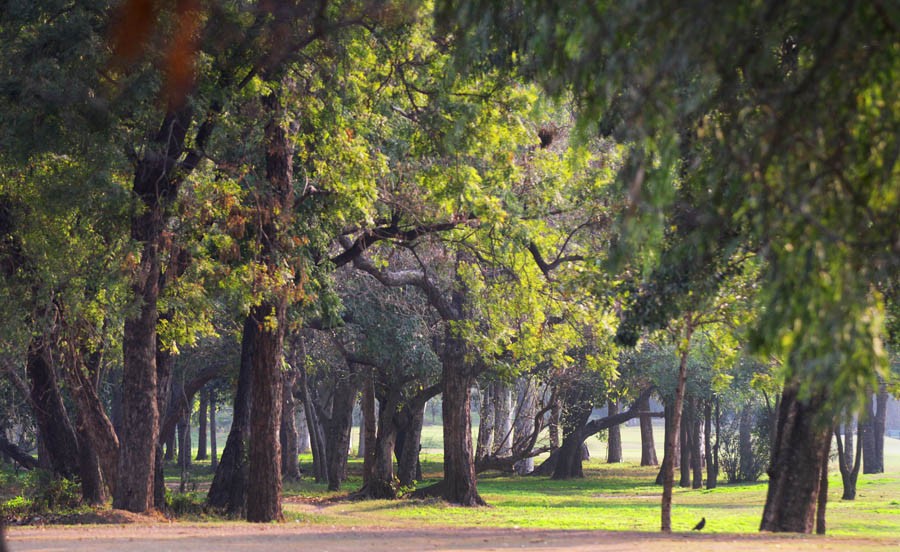
The ‘Urban Heat Island’ effect is inducing local climate changes that compound the global effects of greenhouse gas emissions. Can the situation be helped?

The world’s cities today find themselves in the crosshairs of two global trends: climate change and rapid urbanisation. In many cities, the "urban heat island effect (UHI)," a phenomenon in which urban areas are significantly warmer than the surrounding countryside, is inducing local climate effects that compound the global effects of greenhouse gas emissions.
In a city like Lahore, this combination is expected to exacerbate public health risks and drive up energy consumption in what is becoming a dangerous feedback loop.
With severe heat waves in recent years, the people of Lahore are slowly becoming aware of the fact that urban heat is a serious and growing threat to public health, and the warming climate shall only aggravate the problem. It might not have been as visible as other catastrophes, but with far-reaching implications in the recent past, people have started questioning the sudden uptick in temperatures within the city and more or less are aware of the reasons that have brought the situation to this point.
More than ever, the urbanites share a common affiliation, whether they live in the old quarters of the city or the newly developed posh localities -- they are opening up to new ideas to counter the increasing temperatures. Amongst the many options available the more promising strategy to mitigate the impact of the UHI effect is the expansion of urban green spaces, such as city parks, which according to a recent study at Yale University helps in bringing down the temperature by 1.3-1.6 degrees Celsius through the natural process of transpiration that cools down local temperatures.
There’s a catch. Nourishing these green spaces requires precious water resources that many growing cities simply can’t spare. City planners are faced with a pressing issue: if there is a tradeoff in mitigating the urban heat island effect and conserving water, do you want to use that water to reduce those impacts or save it for other purposes?
A naïve argument which has caught the attention of urbanites is that increasing the native tree canopy cover in the city is the way to mitigate the UHI effect adequately. Well, that could have been true years ago but new studies reveal that enhancing the tree cover requires choosing the most appropriate tree species to solve the problem. It also suggests that it is imperative to include these types of studies in the tree selection and urban development planning to adequately do away with the UHI.
To truly understand the value of green spaces and trees within the city and its parks, and for all the benefits that they give us, we need to choose the best trees that will thrive in challenging these sites. There are four basic principles of urban tree selection: trees should be pest-resistant and adapted to urban environmental conditions; trees should be highly diverse, including native and non-native species, but avoiding invasive species; trees should meet functional and design objectives; and trees should match management limitations.
It is clear that urban environment has been altered by development activities and human sprawl. Similarly, while selecting trees one must consider these environmental conditions and choose plants that are adapted to the urban environment of the city. The popular ideology promoting native species only disregards the fact that urban conditions are no more like native conditions that were many years ago and that where these native trees evolved. The best choice is to plant both native and non-native trees which are best suited to the urban environment of the city.
By far, the most stressful urban condition for trees is the lack of accessible soil. This is caused by inadvertent and purposeful soil compaction. This can be witnessed when a new road or building is built or demolished; the soil within the area inadvertently becomes compacted due to the use of heavy machinery and the moving of earth. Once compacted and crushed, it is difficult to bring back the soil so that it can support plant life. Moreover, while laying concrete pavements, the soil beneath is purposefully compacted to bear the load of the new pavement to prevent subsiding or cracking.
Similarly, soil patches under trees also play a pivotal role in maintaining the temperature steady within the city. The surrounding soil remains moist under the trees, and the grass dissipates additional heat through the evaporation of water and thus reduces the temperature near the ground. Tree species such as Peepal that consume little water can provide a higher cooling effect if they are planted on grass lawns.
Trees are considered to be nature’s air conditioners, making them the most practical way of alleviating the heat in cities such as Lahore. The urban planners should take drastic measures to improve its forest cover, which is said to be around five per cent and pales in comparison to cities in the developed world. To give an example, Canberra’s 400,000 trees -- all planted in the past century or so -- now deliver benefits worth up to A$15 million per year.
The rise in the UHI effect in urban areas is further proof of the fact that the battle for the planet will be fought in the cities, and that architecture, infrastructure, green cover, and urban design shall be important weapons against it.